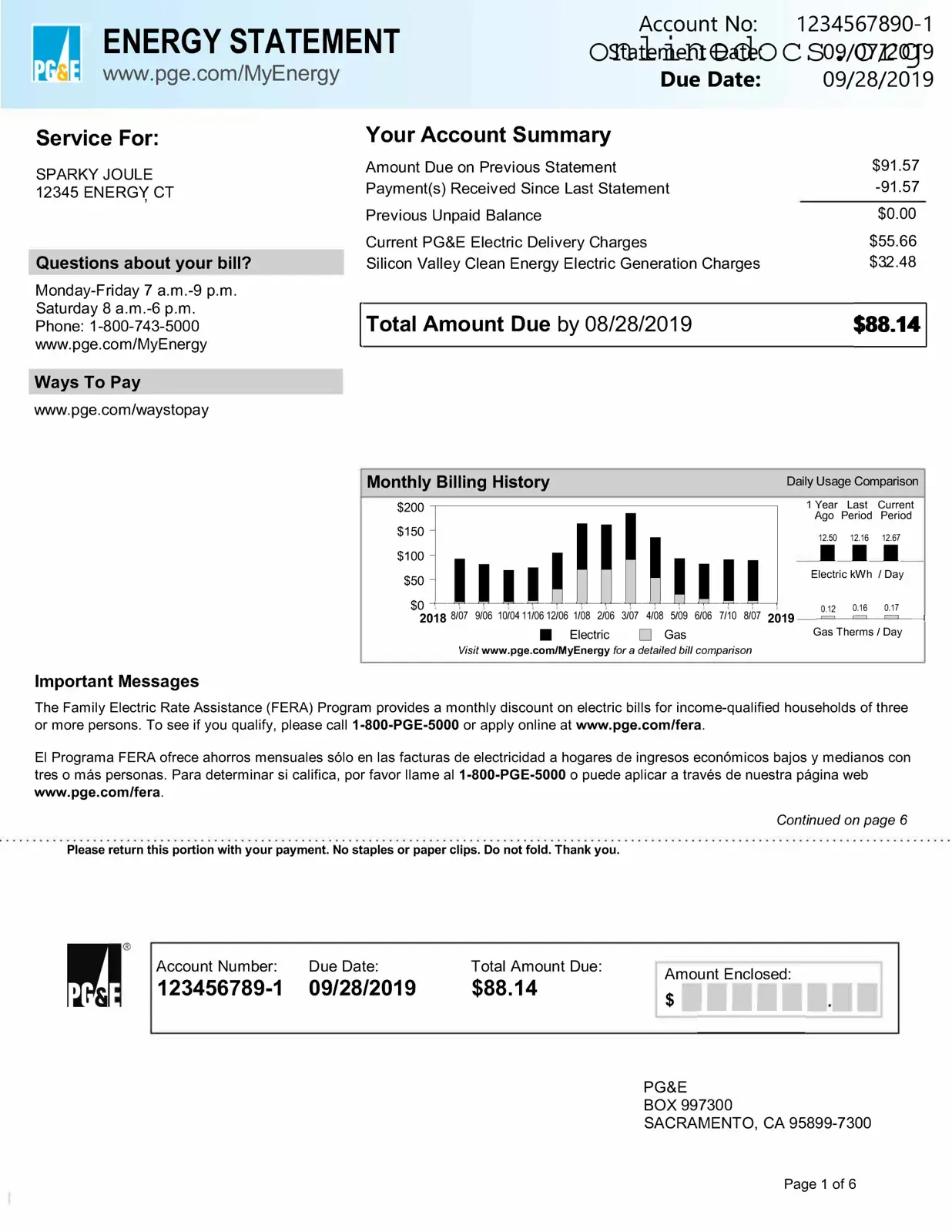The Utility Bill form shares similarities with the Lease Agreement. Both documents serve to establish a formal understanding between parties regarding the use of services or property. A Lease Agreement outlines the terms under which a tenant can occupy a rental property, while a Utility Bill details the services provided, such as electricity or water, to a specific address. Each document typically includes the name of the responsible party, the service address, and the billing amount, ensuring clarity in financial obligations.
The Service Contract is another document akin to the Utility Bill form. This contract details the terms of service provided by a company to a consumer. Like the Utility Bill, it specifies the services rendered, the duration of service, and the costs involved. Both documents require the consumer's acknowledgment of their financial responsibility, making them vital for record-keeping and accountability.
Similar to the Utility Bill form, the Credit Card Statement provides a summary of charges and payments made over a billing cycle. This document lists transactions, including services or products purchased, along with the total amount due. Both documents serve as proof of financial activity and are essential for budgeting and tracking expenses.
To ensure your hiring process runs smoothly, consider utilizing the Employment Verification form for potential candidates. This form helps you gather the necessary information about an individual’s employment history, allowing employers to make informed decisions based on verified data. Filling it out accurately aids in maintaining a transparent recruitment procedure.
The Invoice is another document that parallels the Utility Bill. An invoice is issued by a seller to request payment for goods or services rendered. It typically includes the amount owed, due date, and payment instructions, much like a Utility Bill. Both documents help in maintaining transparent financial transactions between service providers and consumers.
The Bank Statement also bears resemblance to the Utility Bill form. It summarizes all transactions in a bank account for a specific period, detailing deposits, withdrawals, and fees. Similar to a Utility Bill, it provides a clear record of financial activity, allowing individuals to track their spending and manage their finances effectively.
The Receipt is a straightforward document that confirms a transaction has occurred. It details what was purchased, the amount paid, and the date of the transaction. Like the Utility Bill, a receipt serves as proof of payment and is important for record-keeping and potential disputes.
The Tax Bill is another document similar to the Utility Bill form. It outlines the amount owed in taxes for a specific period, usually based on property ownership or income. Both documents require timely payment and provide a clear breakdown of amounts owed, making them essential for financial planning and compliance.
The Membership Statement is akin to the Utility Bill in that it summarizes the benefits and costs associated with a membership, such as a gym or club. This document details the fees due and the services provided, similar to how a Utility Bill outlines the services rendered and the amount owed. Both documents reinforce the financial commitment of the member to the organization.
The Subscription Invoice also shares similarities with the Utility Bill form. It details the charges for ongoing services, such as streaming or magazine subscriptions. Both documents highlight the amount due and the services being provided, ensuring that consumers are aware of their financial responsibilities.
Finally, the Medical Bill is comparable to the Utility Bill form. It outlines the costs associated with medical services received, including consultations and treatments. Just like a Utility Bill, it specifies the total amount due and often includes payment options, ensuring that patients understand their financial obligations related to healthcare services.
